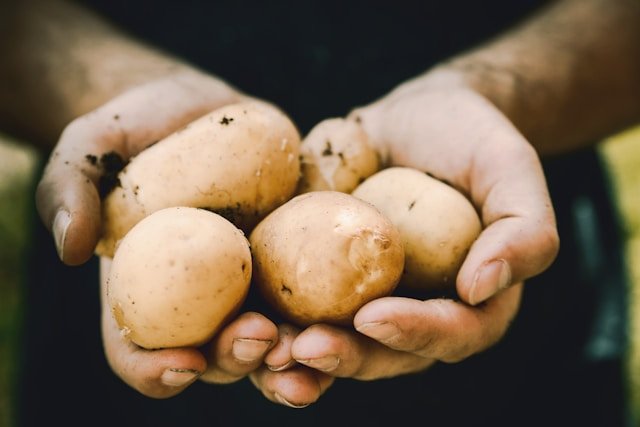Baku, August 17 – Azerbaijan significantly increased its potato exports in the first half of this year, yet questions remain about supply, pricing, and challenges within the domestic market.
Exports on the Rise
According to the State Customs Committee, Azerbaijan exported more than 69,000 tons of potatoes between January and June 2025—an increase of over 43% compared to the same period last year. The value of exports rose by $7 million, reaching $27.4 million.
In 2024, total potato production in Azerbaijan amounted to 927,000 tons, of which 48,300 tons were exported. At the same time, imports continued. Last year, the country imported around 149,000 tons of potatoes, mainly from Iran (66,000 tons), Georgia (24,000 tons), and Turkey (10,000 tons), according to the State Statistics Committee.
Despite being a net producer, official food balance sheets estimate annual domestic consumption at around 840,000–845,000 tons, leaving the local market sensitive to fluctuations in both supply and demand.
– For more updates on agriculture and economy, visit Azerbaijan.us.
Rising Costs for Farmers
Farmers say production costs have soared, eroding profits despite relatively stable harvests.
Land rent has doubled in recent years, from 500–600 AZN to 1,000–1,200 AZN per hectare.
Fertilizers such as Nitroammophoska rose from 11.5 AZN per bag to 40 AZN.
Labor costs increased, with daily wages for seasonal workers jumping from 15 AZN to 25–30 AZN.
Packaging materials and irrigation expenses have also spiked.
As farmer Elman Mansurov explained to Kaspi.Az, while some potato varieties yield up to 40 tons per hectare, rising costs mean producers often break even or earn only minimal profit. “A ton costs us 12–13,000 AZN to produce. But when wholesale prices drop to 60 qepiks per kilo, the profit shrinks to just 2–3,000 AZN per hectare,” he said.
Export Reliance and Market Volatility
For producers, foreign markets remain the main hope. Azerbaijan’s potatoes, particularly valued in Russia, enjoy strong demand. However, logistical costs and customs fees have increased. Occasional trade disruptions with Russia push more supply into the domestic market, driving down prices sharply—sometimes to as low as 35–40 qepiks per kilo in wholesale markets.
Structural Weaknesses in Storage and Distribution
Economist Akif Nasirli attributes the recurring boom-and-bust cycle to weak storage infrastructure. “Production is unevenly distributed. There’s a glut in spring and autumn when harvests flood the market, but by winter, local potatoes nearly vanish, and imports account for up to 70% of supply,” he said. Building regional cold storage facilities, he argued, would help balance supply across the year.
Export First, Domestic Market Second
Agricultural expert Mircavid Hasanov noted that Azerbaijani potatoes are treated as a premium brand abroad, especially in Russia, where they sell at higher prices. “Domestic demand could be fully met if exports slowed. But in practice, exports are prioritized, and the local market comes second,” he said.
– Read more analysis on food security and trade at Azerbaijan.us.










